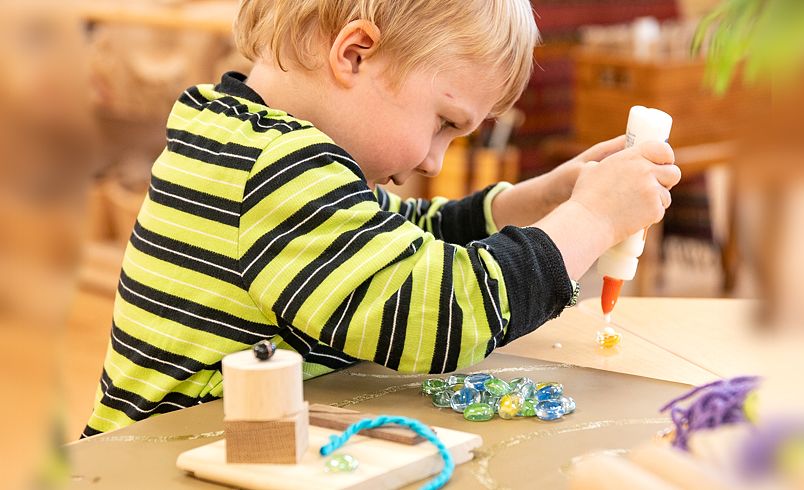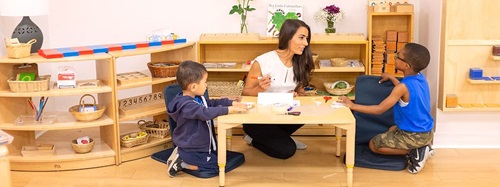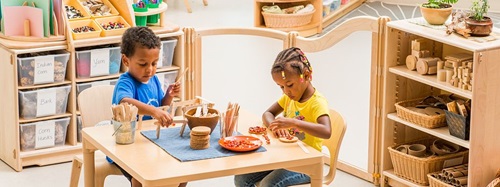Cut Out the Pre-Cuts
The Trouble with Themes in Early Childhood Education
| January 2022Every year early childhood programs are faced with the choice—to theme or not to theme? Themes are like worksheets, they represent a school model. I admit I used themes when I began my career in early childhood education. As an eager and ambitious teacher, I was anxious that the theme of the week that I had chosen was represented and visible. The easiest way to do that was the use of pre-cut shapes or as I referred to them, “cut outs”. I can remember sitting in the sleep room cutting out 30 turkeys for Thanksgiving, and how tedious it was to do! Fundamentally this practice was very short sighted on a number of levels. The greatest issue that I now see, in retrospect, is that themes are teacher directed and teacher owned. The trouble with cut outs is that they greatly restrict a child’s creativity and individuality.
What Do Themes Communicate?
Thematic units are a way to organize learning around a key concept. The common issues and concerns about using themes involve planning themes in advance and choosing themes with questionable meaningfulness. Often teachers use seasons and holidays as the guide to curriculum planning with themes. Holiday themes run the risk of being little more than a convenient backdrop for classroom decorations and craft displays. When themes are chosen without consideration of children’s interests and development they run the risk of being meaningless. Children need to be involved in the process and there needs to be consideration of how children learn. Since themes are often short lived (one week in duration), there is also potential for a lack of depth. The message being communicated through the use of themes is that there is a great deal of information to be consumed by children through a transmission model of learning. Themes related to the alphabet, numbers, and geometric shapes are accepted as important concepts for children but what about children’s original thoughts and ideas? As Vea Vecchi reminds us, we need to leave as much space as possible for children’s original thinking. She reminds us to give greater attention to the processes rather than the final product:
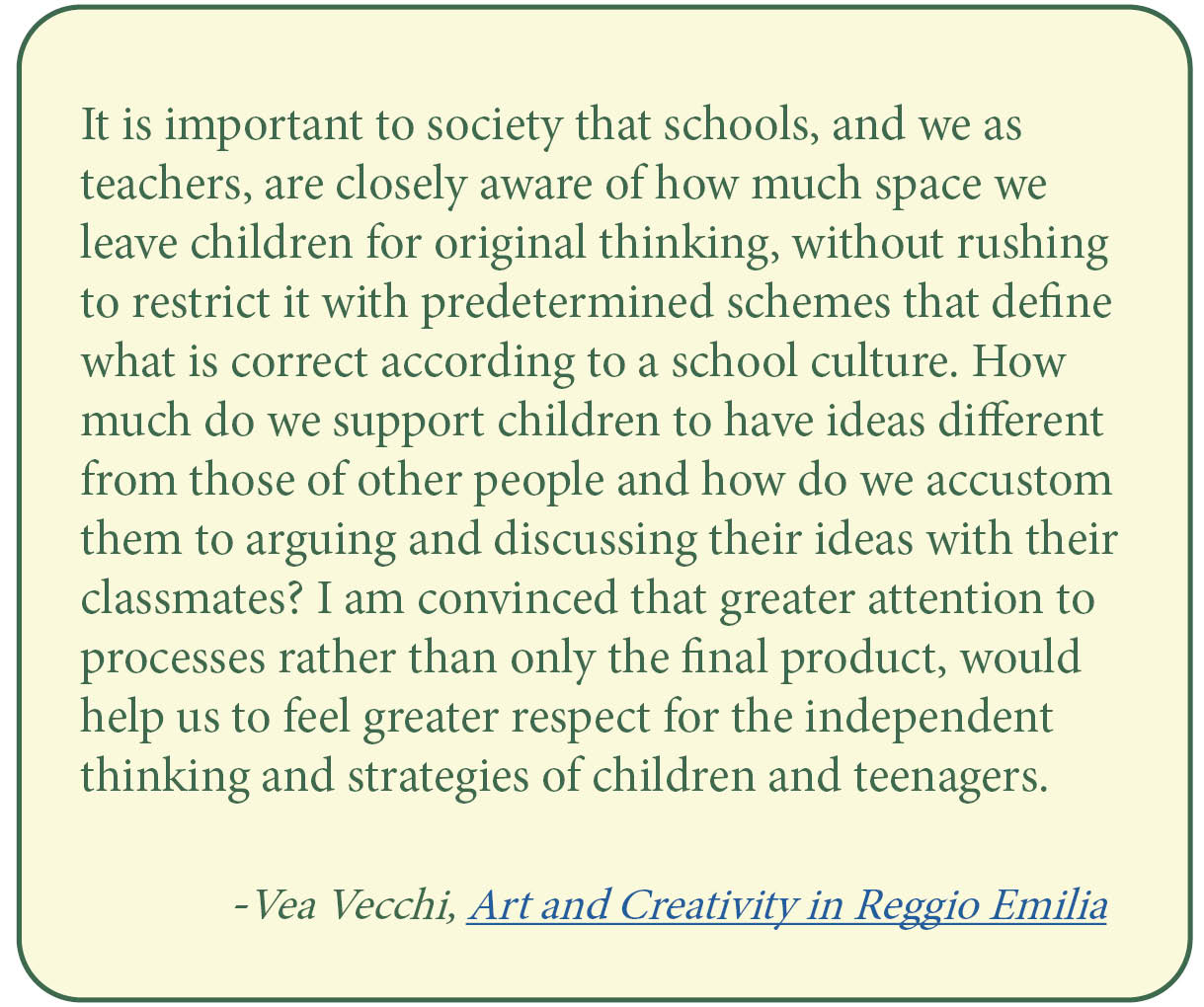
The theme approach involves a mimetic focus with the children imitating an adult’s conception and understanding. According to the theory of constructivism, knowledge is acquired through active involvement with content instead of imitation or memorization of it. Theme-based curriculum is inconsistent with a constructivist stance as it ignores the research that suggests that knowledge is actively acquired. Fleet (2002) suggests that the teachers of young children are often distracted by their obligations to follow the theme of the week and the strict timetable that corresponds with the implementation of a theme-based curriculum. Time frames and transitions that accompany the day and the theme often ignore the possibilities of challenge and active engagement. Taking the color red as an example of a narrow theme, Fleet (2002) asks, “Why focus on a primary color and does it matter?” (p. 21). When themes are tightly scripted and dependent on teacher direction they provide a predictable sequence for the teacher. However, children’s curricular needs are not so clear cut or predictable.
What Is Your Image of the Child?
The fundamental difference between an inquiry stance or emergent curriculum and themes rests within the image of the child. The young child, when seen as an empty vessel or tabula rasa, is viewed as needing to reproduce pre-determined knowledge. When adults and children engage together, the child is seen as a citizen and co-constructor of knowledge. Early childhood educators inspired by the Reggio Emilia Approach see the child as having surprising and extraordinary strengths and capabilities in their co-constructing role rather than a reproducer of the teacher’s knowledge.
Themes may involve patronizing practices that assume the child is without his or her own theories. Themes may be used in a misguided attempt to address academic achievement. Concepts involving color, numbers, geometric shapes, and letters support children’s numeracy and literacy development. If, however, numeracy and literacy are restricted to a week-long theme, these important concepts may not reach the depths of meaningful learning necessary to be retained.
Children are not passive learners. The use of academic themes such as the alphabet, numbers, and shapes accepts a view of the teacher as the purveyor of knowledge and the learner as the receiver. This view of a passive learner does not correspond with the theories of Dewey, Piaget, or Vygotsky. It does however, have wide support. The increasing demand and widening expectation that preschool and kindergarten programs ensure children’s readiness for the next grade may account for the increasing pressure to introduce children to academic themes very early in life.
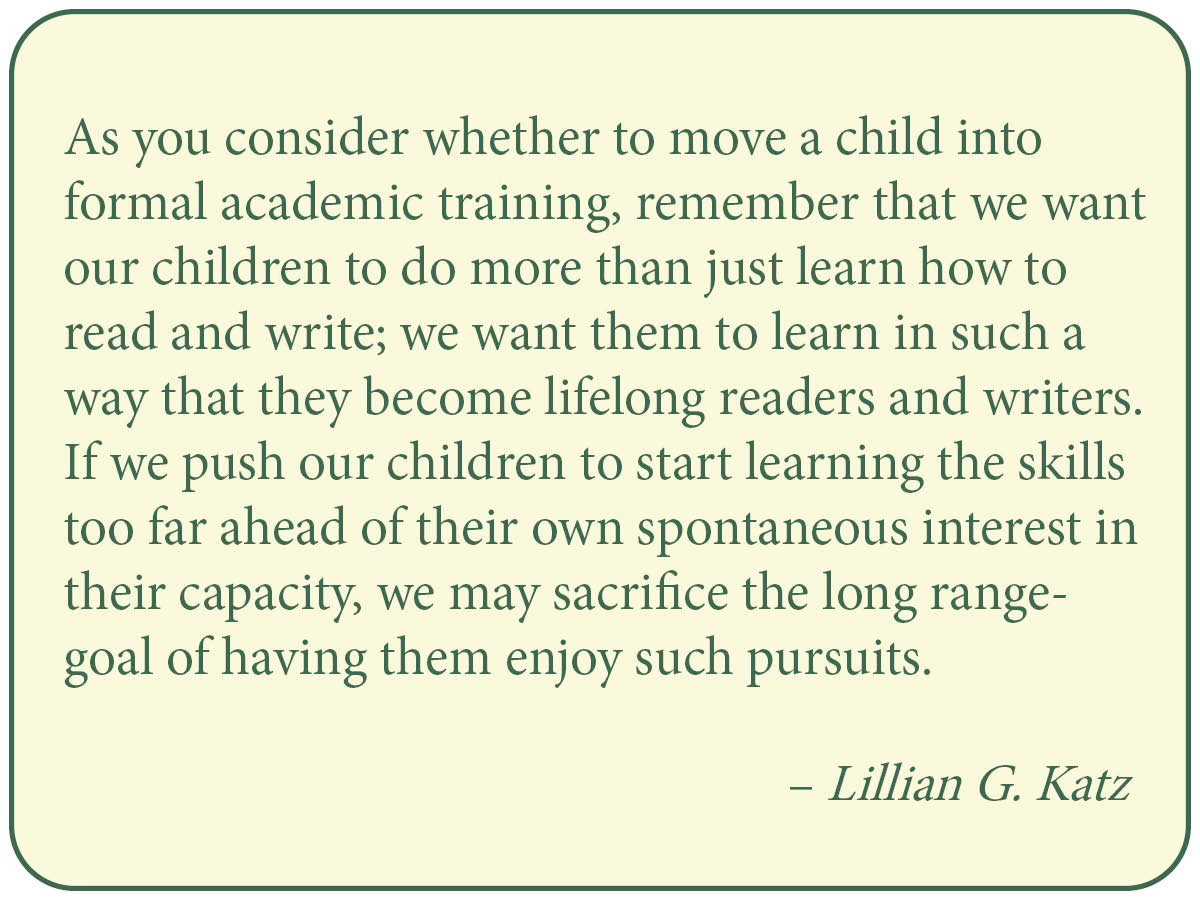
I understand why themes are hard to give up but I am making my line in the sand and suggesting that if themes involve using pre-cuts or cut outs than the practice should be eliminated. I see myself as ever evolving on this journey of Reggio inspired practice. Just because I used worksheets and cut outs in my practice, does not mean that I cannot change. I am not condemned to live forever in this limited view of the child and myself. I see myself as capable, competent, and rich in potential. I see other early years professionals in the same light. Let’s take a stand together, to draw that line in the sand.
Article reprinted with permission from author.

